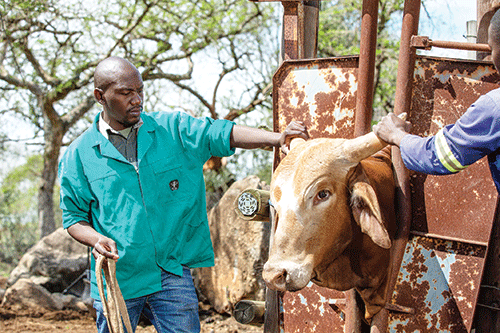The Namibian meat sector, which is acclaimed worldwide for its premium health standards and superiority, has once again received a massive boost after the World Organisation for Animal Health (WOAH) endorsed the country’s status as a bovine-tuberculosis free zone.
Through the directorate of veterinary services, Namibia recently submitted its self-declared status of being free of bovine-tuberculosis to the WOAH for scrutiny and possible endorsement through publication on its website – which is a mark of certification within the global animal health arena.
After some in-depth analysis of the country’s submission, the WOAH agreed with the results and moved to endorse Namibia’s self-declared status as being free of the infectious bovine-tuberculosis disease.
Bovine-tuberculosis is caused by the mycobacterium complex and is a major zoonotic disease, and cattle are the main source of infection for humans.
The latest endorsement and publishing of the country’s free status by WOAH again reaffirms Namibia’s global position as one of the leading countries with an exceptional animal health status, producing world-class livestock and premium livestock products.
In its submission, the directorate of veterinary services said that the self-declaration is for the zone located south of the Veterinary Cordon Fence (VCF), which is recognised by the WOAH as a foot-and-mouth disease (FMD) free zone without vaccination since 1997.
This zone is also recognised as free of contagious bovine pleuropneumonia since May 2016 and peste des petits ruminants since May 2015, while the entire country has been officially recognised by WOAH as having bovine spongiform encephalopathy negligible risk status since May 2016.
“This is the first self-declaration of historical freedom from bovine-tuberculosis caused by mycobacterium complex in cattle in this zone and is effective immediately after publication on the WOAH website. The zone being declared historically free from bovine-tuberculosis covers all the regions of Namibia south of the VCF. Namibia has a total cattle population of about 2.6 million of which approximately 1.4 million are in the zone being declared bovine-tuberculosis free,” reads the published submission.
Favourable statistics
The WOAH agreed that Namibia has for the past 10 years boasted effective mechanisms that detect bovine-tuberculosis outbreaks early enough and that for more than 25 years, there has been no occurrence of bovine-tuberculosis in the country, with the last case reported in 1995.
WOAH was impressed with the country’s passive and active surveillance that is carried out in accordance with the WOAH Terrestrial Code and ensures an early warning system, while all suspected cases of bovine-tuberculosis are subjected to field and laboratory investigations and measures implemented in case of suspected epizootic diseases. An awareness programme about the disease continues to be implemented, while the training of staff members, including abattoir staff as well as farmers has also been implemented.
History
Historically, the bovine-tuberculosis disease was first diagnosed in Namibia more than 100 years ago; the first report of its presence was in 1913. All of the 167 confirmed cases from 1913 to 1984 were in dairy cattle.
The 25 cases detected in 1913 were cattle originating from Germany, while the 142 cases recorded from 1930 to 1986 were traced to the importation of infected animals from South Africa. The response to all confirmed cases was testing all cattle in the herd and traced herds using the comparative intradermal tuberculin test and culling all positive reactors.
– ohembapu@nepc.com.na


